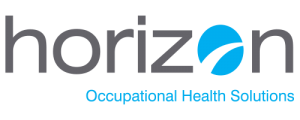
Biological monitoring is a means of estimating exposure to a substance (chemical/element) among affected individuals who have been identified as working in an area of risk. It is the measurement of the chemical or its metabolite that has been absorbed into the body.
Testing can be conducted via blood, urine or exhaled air (breath) to determine whether the uptake of a chemical into the body has occurred. Evaluation of workers for chemicals/elements can provide information about the possible impact of absorption of hazardous material/toxic agents.
THE PRIMARY OBJECTIVES OF BIOLOGICAL MONITORING INCLUDE:
- The protection of the worker through early detection of elevated exposure dosage and implementation of early treatment
- The detection of changes in health status at an early stage, in order to reduce long-term morbidity and mortality
- Establishing baseline data concerning a worker’s state of health ensuring suitable job placement
- To make recommendations, based on biological testing results and personal & workroom monitoring analysis, for continuation of control programs in the workplace.
DID YOU KNOW?
The body can be exposed to dangerous substances through a variety of routes including inhalation, ingestion or or skin absorption.
WHAT ARE COMMON TYPES OF BIOLOGICAL MONITORING?
Urine is the preferred indicator for nickel, cobalt, and arsenic monitoring. Urine is the least intrusive sampling method and is relatively easy to collect and analyze. Blood is the preferred indicator for lead monitoring. Urine and blood are both recommended for Cadmium sampling, another element that can be tested during biological monitoring.
WHEN ARE BIOLOGICAL MONITORING PROGRAMS NEEDED?
Biological monitoring programs are implemented when employees may be exposed to airborne concentrations greater than the occupational exposure limit. They may also be considered when routes of exposure other than inhalation (i.e. ingestion, skin absorption) may significantly contribute to the overall exposure. Biological monitoring may also be run based on the requirements of the Designated Substances Regulation by the Ministry of Labor under the Occupational Health and Safety Act.
WHAT IS THE BENEFIT TO THE EMPLOYER OF HAVING A BIOLOGICAL MONITORING PROGRAM?
While air or personal air sampling reflect the amount of contaminant that may be inhaled, biological monitoring results reflect exposure from all routes, including inhalation, oral ingestion and skin absorption.
Biological monitoring can also help determine if the main route of exposure is one other than inhalation. If the air monitoring shows low exposure concentrations in air, but the worker’s urine or blood samples show elevated levels, then ingestion and/or skin absorption may be the primary route of entry. At this point, work practices, procedures, and controls (engineering, administrative, hygiene, and PPE) can be modified.
Biological monitoring can also be useful in assessing the efficiency of a worker’s PPE (personal protective equipment).
WHAT INDUSTRIES BENEFIT FROM BIOLOGICAL MONITORING?
Industries where workers are in close proximity to chemicals, hazardous agents, or a known Designated Substance would
benefit from biological monitoring. However, it’s important to note that in some cases, measurements may not distinguish between occupational and non-occupational exposure.
Similarly, there are factors outside of the workplace such as diet, alcohol use, smoking and other drug use that may affect the levels of a chemical or metabolite in biological specimen, making interpretation difficult at time. It is therefore important to interview the worker following an elevation of their biological monitoring result in order to assist the occupational health provider with as much information as possible prior to his/her interpretation and recommendations to the worker.
BIOLOGICAL MONITORING SUCCESS STORY:
During the course of Biological Monitoring in the Package & Shipping Department at one of our Horizon OHS client sites, elevated urine nickels were noted. As a result, recommendations were made to the client to limit future exposure to this soluble nickel dust by implementing mandatory respirator equipment for workers in the affected area.
To learn more about biological monitoring programs and what Horizon OHS can do for your organization, contact us at info@horizonohs.com
